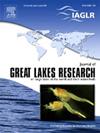Comparison of cisco (Coregonus artedi) aerobic scope and thermal tolerance between two latitudinally-separated populations
IF 2.4
3区 环境科学与生态学
Q3 ENVIRONMENTAL SCIENCES
引用次数: 0
Abstract
The cisco Coregonus artedi is a coldwater fish that is distributed throughout much of Canada and the northern United States, including the Laurentian Great Lakes. Cisco historically supported large commercial fisheries in the Great Lakes during the late 1800s and early 1900s, but many populations declined and never recovered. Restoration efforts focusing on re-establishing cisco in the Great Lakes are underway, but increasing water temperatures may hinder these efforts. Therefore, we examined aerobic scope and thermal tolerance of allopatric cisco populations from different latitudes and habitats to determine if a southern latitude population (Crooked Lake, Indiana, USA) near the southern edge of cisco distribution was better adapted to withstand warmer water temperatures than a northern latitude population (Les Cheneaux Islands, Michigan, USA; Lake Huron). As expected, both stocks demonstrated increases in metabolic rates and absolute aerobic scope with increased temperature. Northern cisco had significantly lower aerobic scope compared to southern cisco at both treatment temperatures of 10 and 13 °C. Both cisco stocks had high thermal tolerances when challenged by temperatures increased to 20 and 23 °C but low tolerances at 26 °C. Cisco thermal tolerances increased with acclimation temperature, but we did not detect a difference in thermal tolerances between northern and southern cisco. Although southern cisco had higher capacity for aerobic metabolism, both stock sources had high thermal tolerances at the upper end of their thermal limits. Therefore, either population would be likely suitable for reintroduction into Great Lakes habitats, even with expected warming in the future.
两个纬度不同的种群之间的矶鳕有氧范围和热耐受性比较
Cisco Coregonus artedi 是一种冷水鱼,分布在加拿大大部分地区和美国北部,包括劳伦伦五大湖。在 19 世纪末和 20 世纪初,矶沧鱼曾在五大湖支持过大规模的商业捕捞,但许多种群数量减少,再也没有恢复。在五大湖重建矶沧鱼的恢复工作正在进行中,但水温的升高可能会阻碍这些工作的开展。因此,我们研究了来自不同纬度和栖息地的同域矶沧鱼种群的有氧范围和耐热性,以确定靠近矶沧鱼分布南缘的南纬种群(美国印第安纳州克鲁克德湖)是否比北纬种群(美国密歇根州莱切诺群岛;休伦湖)更能适应较高的水温。正如预期的那样,随着温度的升高,两种鱼群的新陈代谢率和绝对有氧范围都有所增加。在 10 ℃ 和 13 ℃ 两种处理温度下,北部矶沧鱼的有氧范围明显低于南部矶沧鱼。当温度升至20和23 °C时,两种鱼类都有较高的耐热性,但在26 °C时耐热性较低。思科鱼的耐热性随适应温度的升高而增加,但我们没有发现北部和南部思科鱼在耐热性方面存在差异。虽然南方矶沧鱼的有氧代谢能力较强,但两种鱼种在其耐热极限的上限都有较高的耐热性。因此,即使在未来气候变暖的情况下,任何一个种群都可能适合重新引入五大湖栖息地。
本文章由计算机程序翻译,如有差异,请以英文原文为准。
求助全文
约1分钟内获得全文
求助全文
来源期刊

Journal of Great Lakes Research
生物-海洋与淡水生物学
CiteScore
5.10
自引率
13.60%
发文量
178
审稿时长
6 months
期刊介绍:
Published six times per year, the Journal of Great Lakes Research is multidisciplinary in its coverage, publishing manuscripts on a wide range of theoretical and applied topics in the natural science fields of biology, chemistry, physics, geology, as well as social sciences of the large lakes of the world and their watersheds. Large lakes generally are considered as those lakes which have a mean surface area of >500 km2 (see Herdendorf, C.E. 1982. Large lakes of the world. J. Great Lakes Res. 8:379-412, for examples), although smaller lakes may be considered, especially if they are very deep. We also welcome contributions on saline lakes and research on estuarine waters where the results have application to large lakes.
 求助内容:
求助内容: 应助结果提醒方式:
应助结果提醒方式:


